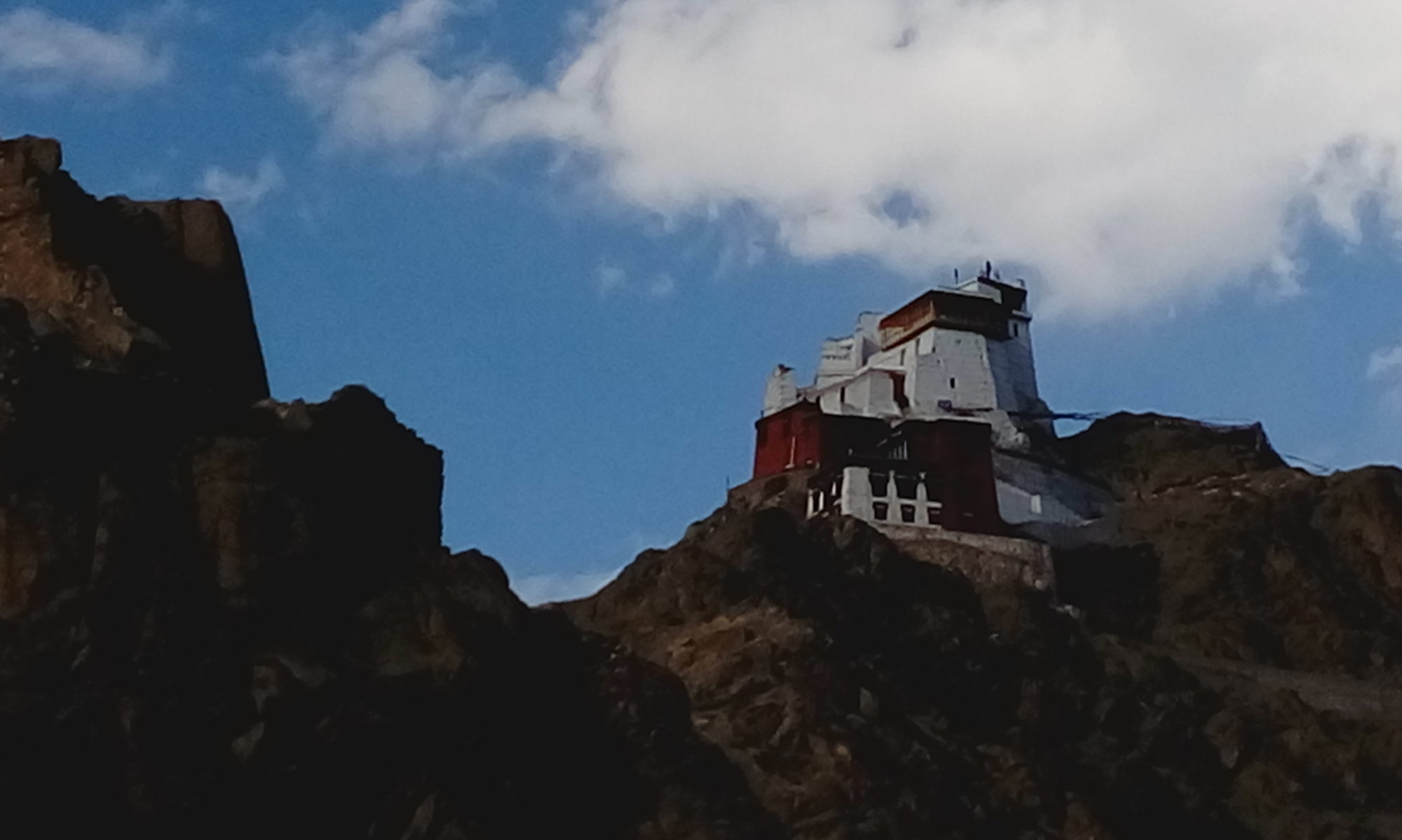It is 9:30 in the morning on day 2 at the Hornbill Festival as I sip the rice beer being offered. It is followed by flavoured roast gram in a tiny bamboo mug hooked to a finger. I am sitting in a sunny spot just below one of the pavilions. As soon as the Chakhesang tribe started filing out of their Morung humming in unison, beer and snacks in hand I scooted behind and grabbed my spot from the previous day on the stone steps. I got lucky that they decided to sit right there. I offer the goodies further to the elderly man from the Kachari tribe sitting on the other side next to me. I get a disapproving shake of the head and a haughty nose is gently turned up and away. I have a lot to learn….But what I did learn was how to maximize the minimum days I had at the festival at the Heritage Village of Kisama.
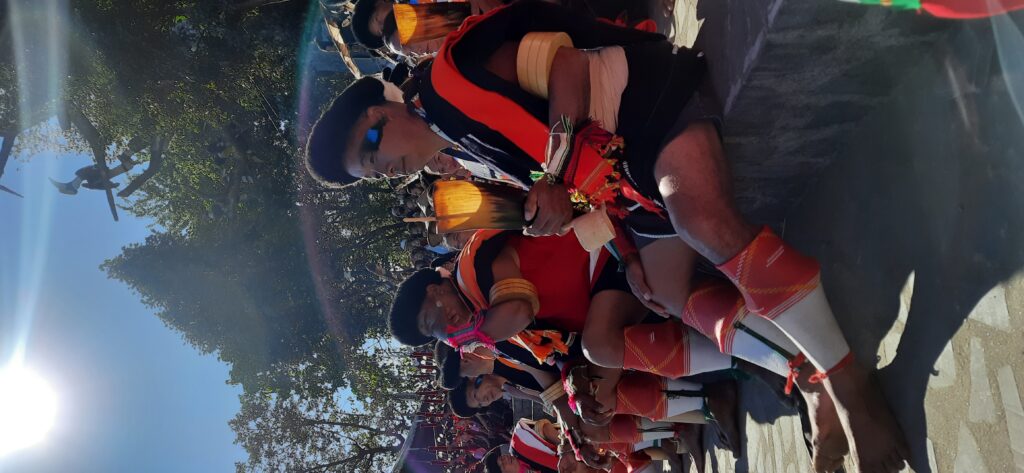
1. The cultural performances at the main amphitheatre begin by 9:30 am or later, depending on what time the chief guest of the day deigns to arrive.
2.Reach about an hour early and head for the Morungs right behind the arena. Each tribe has it’s own Morung where the participants congregate, get ready, get a pep talk, have their meals and perhaps an early morning tot to limber up! Perfect place to meet people, chat, get a glimpse of the Naga’s traditional life not to mention some great pics as well.
Get a glimpse of traditional life in- A Tale of Two Veiled Valleys: Part I- Shangarh’s Meadows are meant for Musing
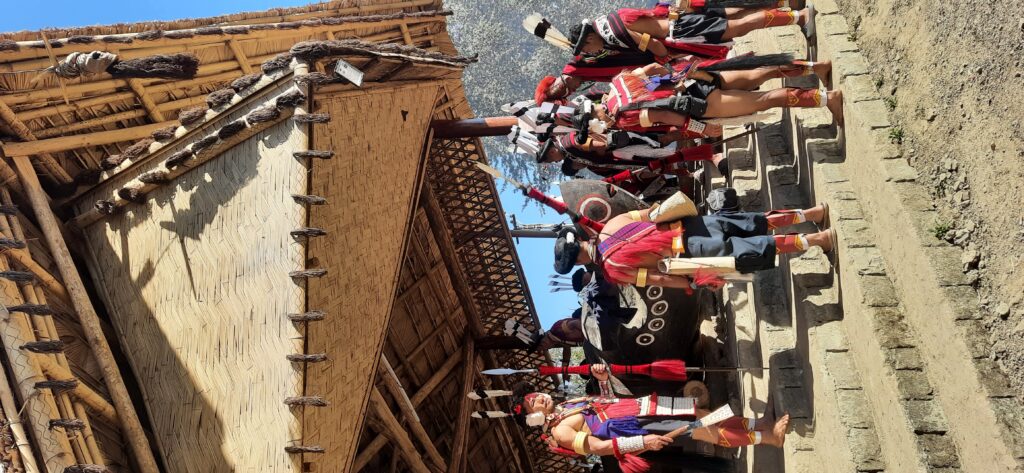
On day one as I stood taking pics of the Ao youngsters seated around their painted log, getting a pep talk and then say a prayer, I suddenly found an arm around my shoulder. One of the older guys wanted to be photographed with me!
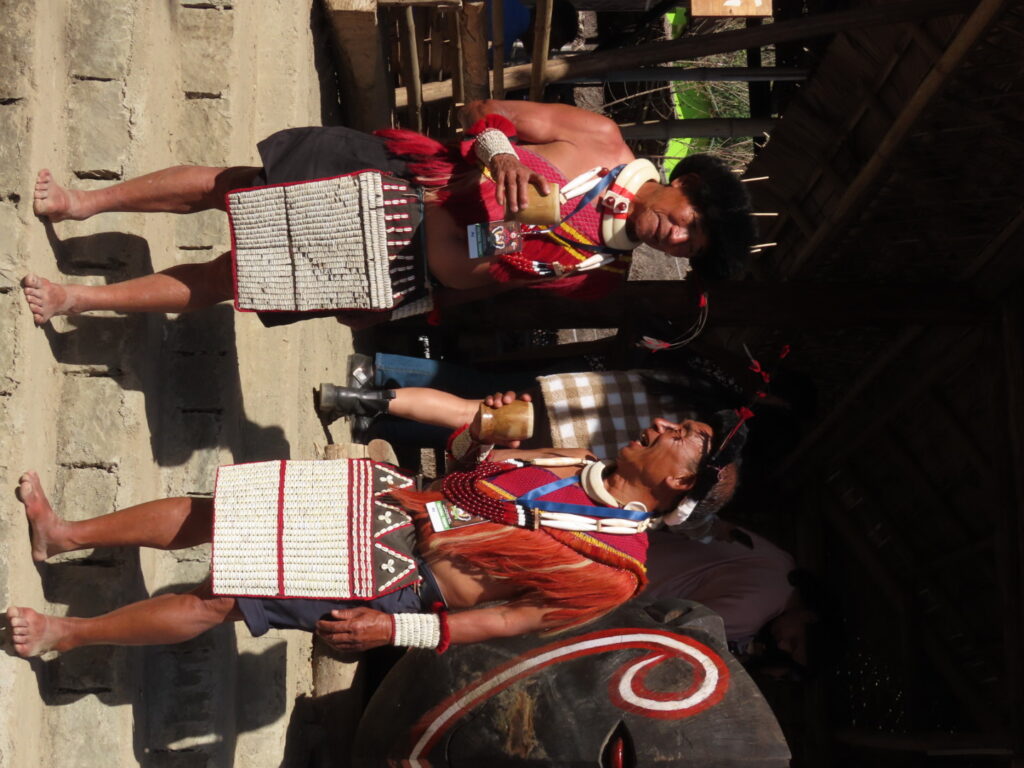
3.Then head to the arena and find a spot, preferably on the right of the centre on the stone steps. Apart from sitting with a participating tribe probably, it offers apt lighting and stays in the shade. The sun is toasty early on but one can get baked soon enough. Focused photographers favour sitting just inside the fence on the matted grass of the arena.
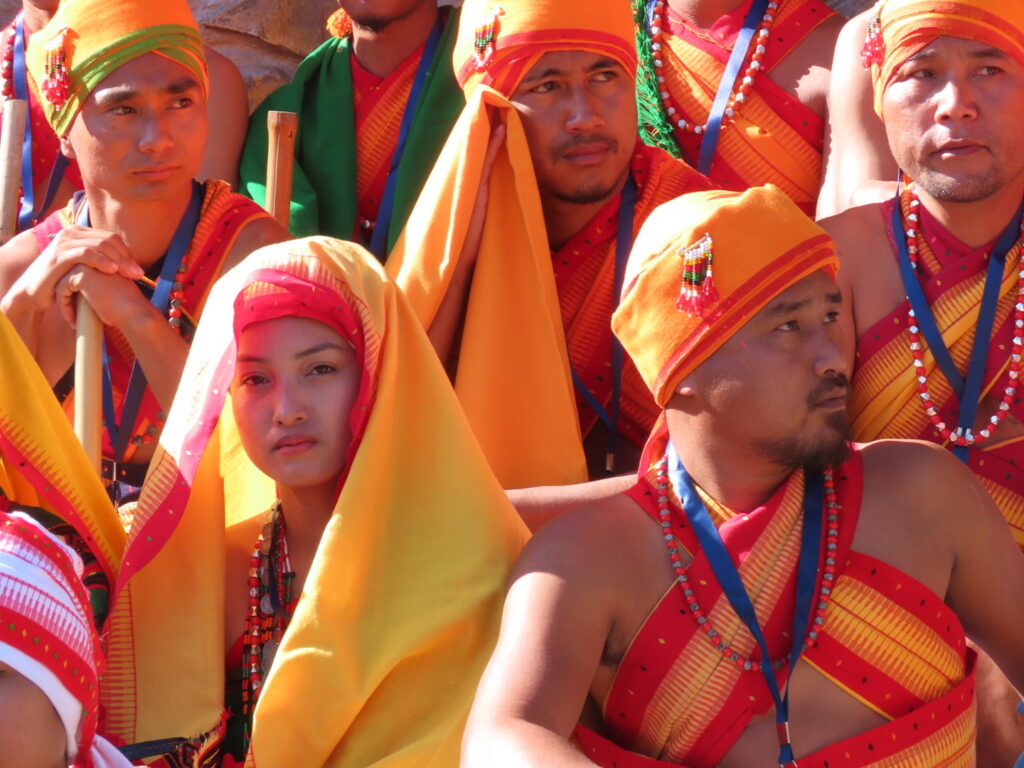
4.Each tribe present is introduced at the beginning of the day’s programme. They stand, ululate and generally make their presence felt. Their performances, from courting songs, enactments of games and head-hunting scenes are short affairs and often the same tribe perform different facets on different days.
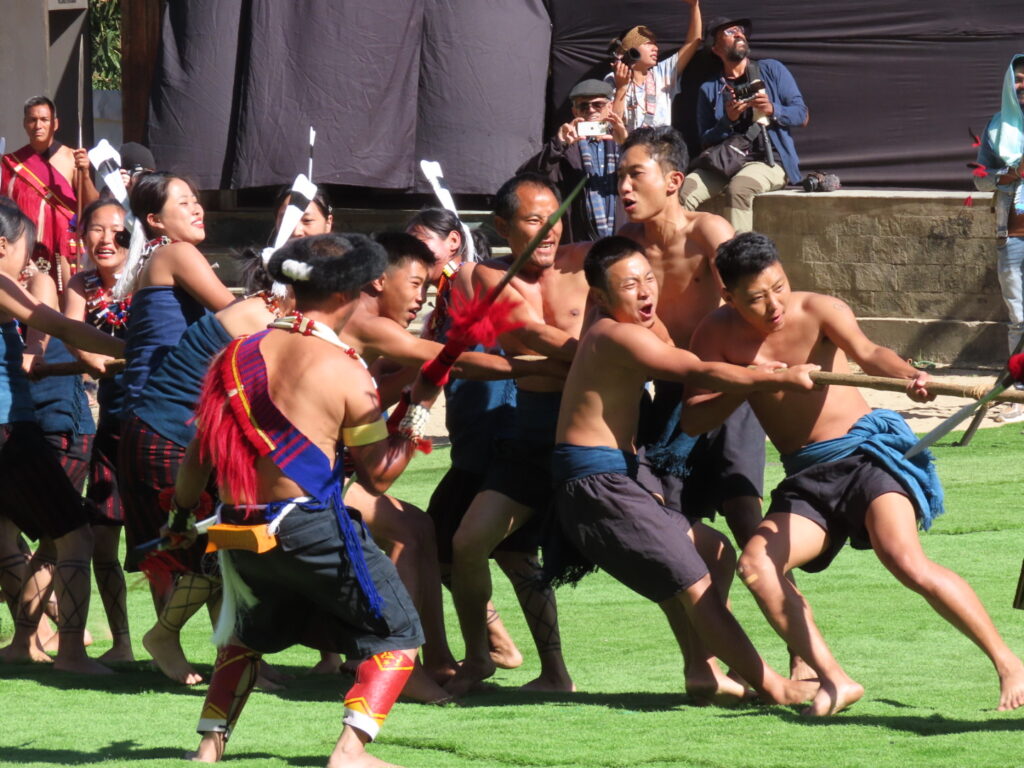
5.Around 11:30 am there is a break and the participants head for the Morungs for lunch and drinks. On the first day I met a youngster at the Chakhesang Morung who happily showed me around, pointing out artefacts like a log used for pounding the grains, baskets used by men and women and offered tobacco being cured by barely there smoke curling up. The next day at the Zeliang Morung it is strips of pork hanging from bamboo rafters being smoked that has us flocking around in fascination.
Read about an obscure town’s claim to fame in-Nasirabad’s Kachora: More than a Savoury Story
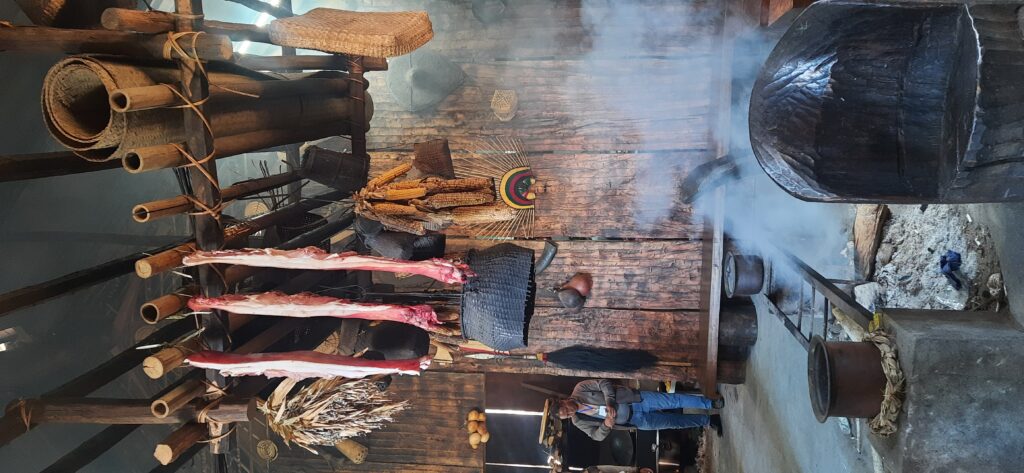
6.Pick a tribe whose food you want to sample. The flavours might differ but the basics remain the same- sticky rice, pork smoked or plain spicy, beef, a flavourful green vegetable, a spicy bamboo shoot chutney and perhaps salad. Its self-help once you buy a coupon and only the meat portion is served fresh from the kitchen in a bowl. On both days I had lunch at different Morungs and the chunky pieces of divinely yum smoked pork from the Sumi tribe were generous enough for greedy me to share with two fellow hungry young visitors who agreed that either you love the fat or you don’t! One did, the other didn’t.
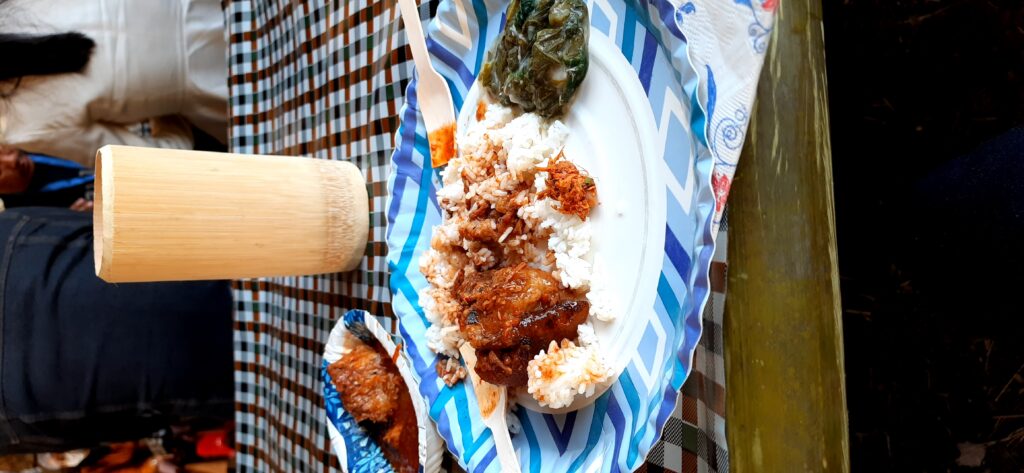
The cool rice beer(finally!!) in a tall bamboo mug came from the Chakhesang tribe on both days. Not too potent but since I was neither willing to take a chance to discover otherwise nor willing to let go off the mug, I was reluctantly allowed to wander off with the precious mug with a promise to return it. I did.
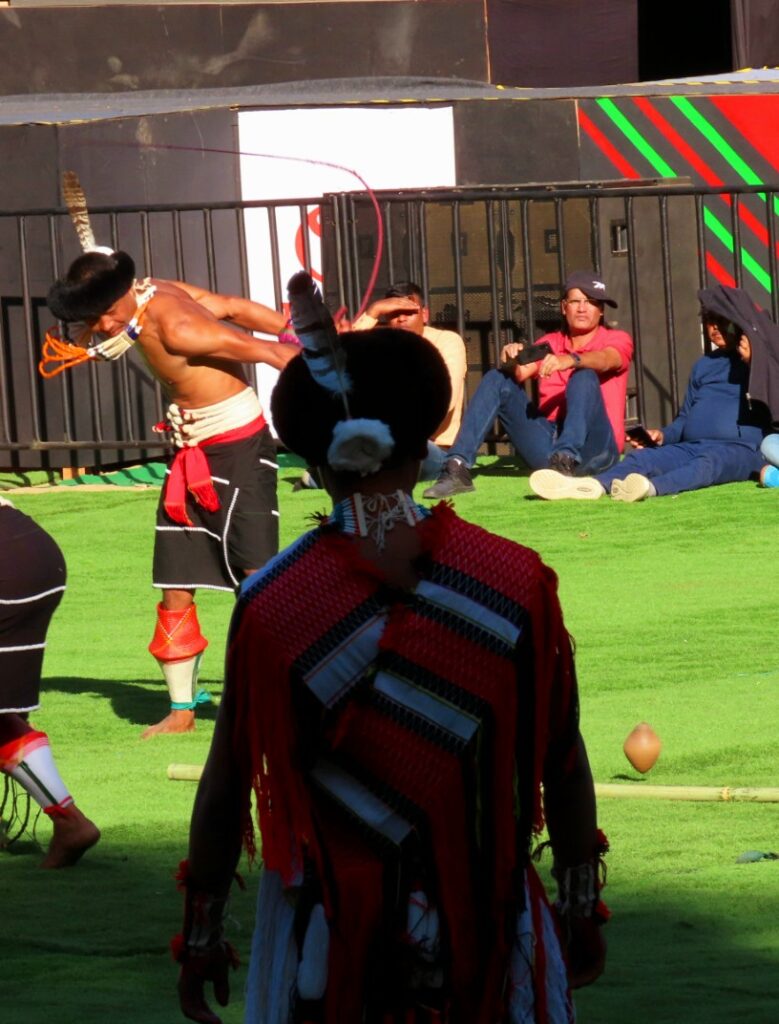
7.Afternoon shows are more packed and I think after the beer drinking more entertaining offstage! The elated head-hunters after giving a rather artful performance carried on waving the rather shrunk head on a spike on a side, being cheered on by their tribe members.
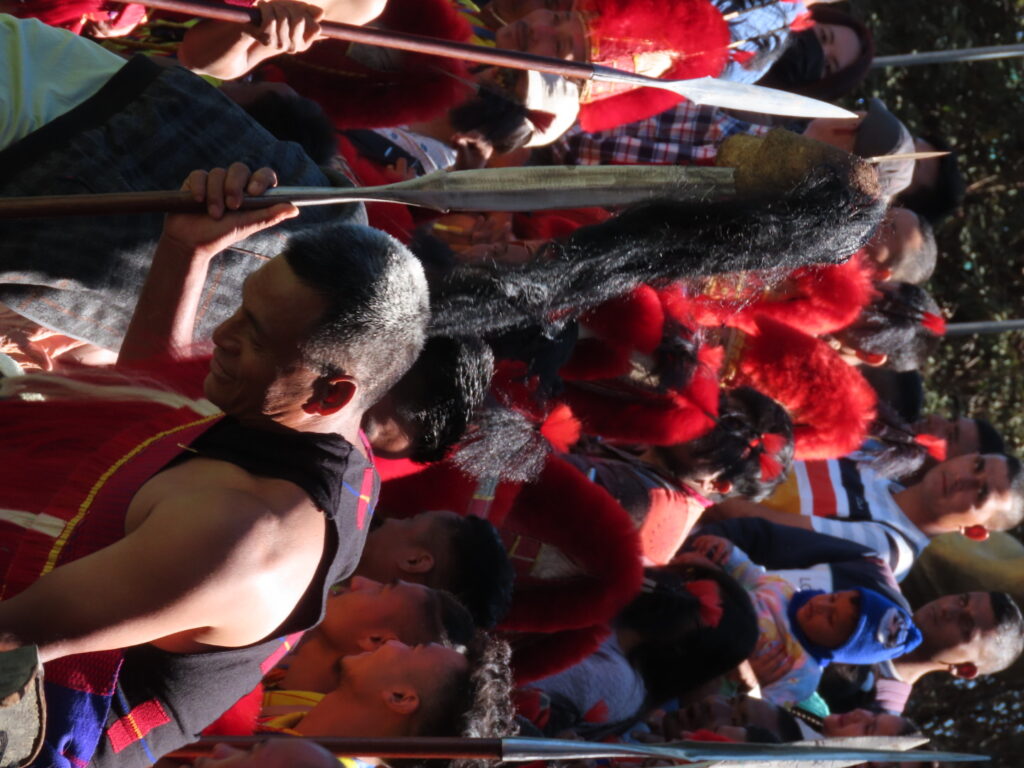
8.Apart from the cultural show at the main arena, there is a World War II Museum ground where this year there was a drool worthy collection of vintage Willi jeeps. Another arena had a Naga Masterchef competition on. On a side is an arcade of stalls selling souvenirs, jewellery, shawls, dahs, knives, chopping blocks, pottery etc although many Morung’s have knick-knacks and shawls distinct to their tribe on sale as well.
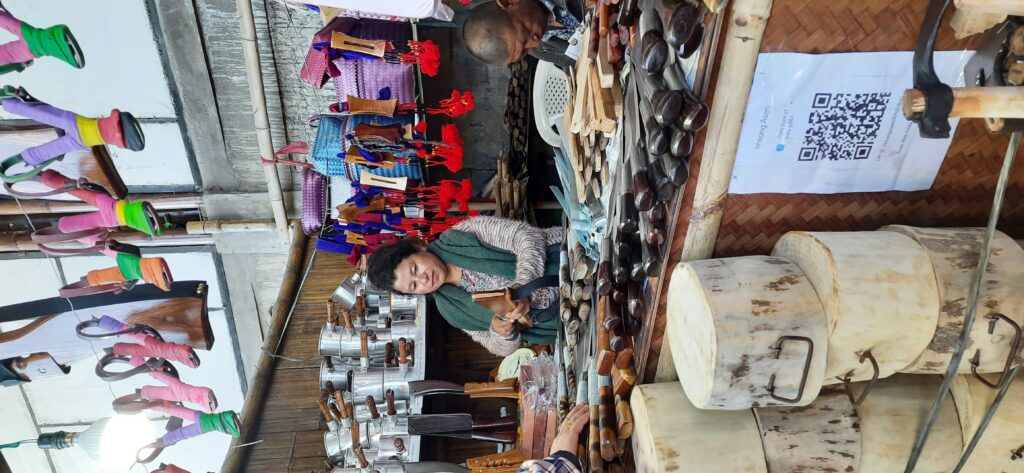
9.There is a separate section for organic produce, a competition for local vegetables (super-sized cabbage anyone or an enticingly luscious red raja mircha?) and humungous floral arrangements you can disappear into. Must try the fresh juicy pineapples and kiwis.
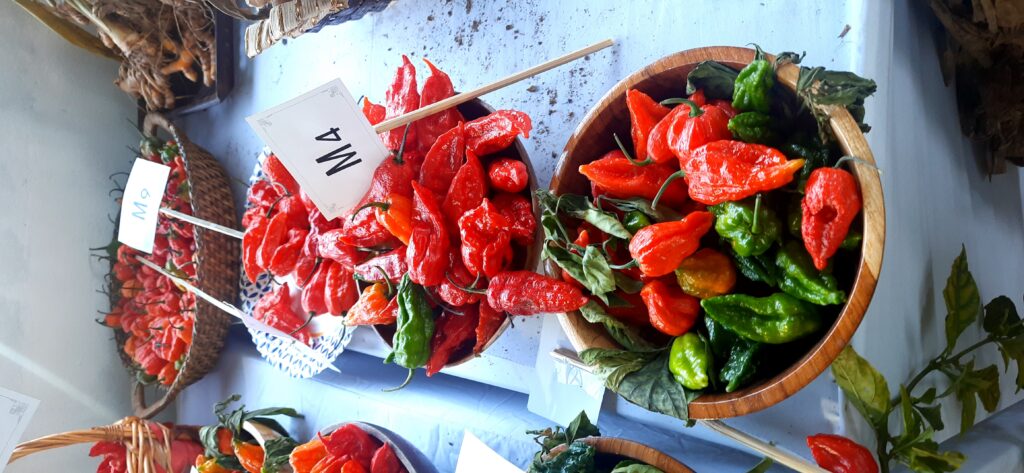
10.A coffee joint with a sitting area next to the main amphitheatre is a big magnet in the morning. There are pay and use loos. Thank God!
11.It gets nippy as soon as the sun dips behind the hill so keep the jacket handy. Attend the evening concert which starts after 5pm. Sounds early? Remember its not really IST here and in winter night falls by that time. There are families sitting around wondering what is going on, youngsters high on music, solitary figures brooding over beer lost in the voices only they can hear. The music genre is mostly EDM and rock. The atmosphere eclectic and electric!
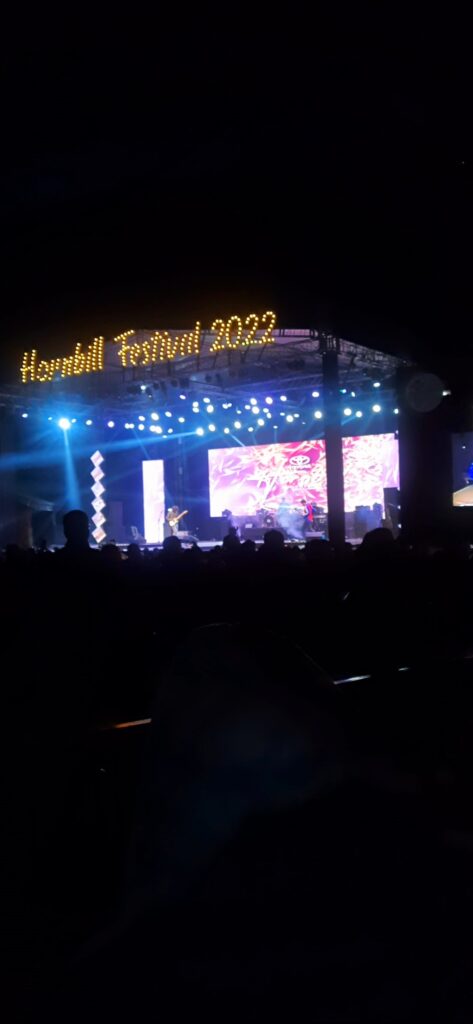
12.If the pulsating music is not your scene try the Morungs. I discovered bonfires, candlelight and trios belting out classics to chock-a-block full tables.
13.Or you can, if you are staying at Kohima attend the night market in the main street. With Christmas round the corner the air is festive and aromatic with live grills.
Read about singing skills in- 3 Churches in Mhow: Discovering Obscure History and Outstanding Carols
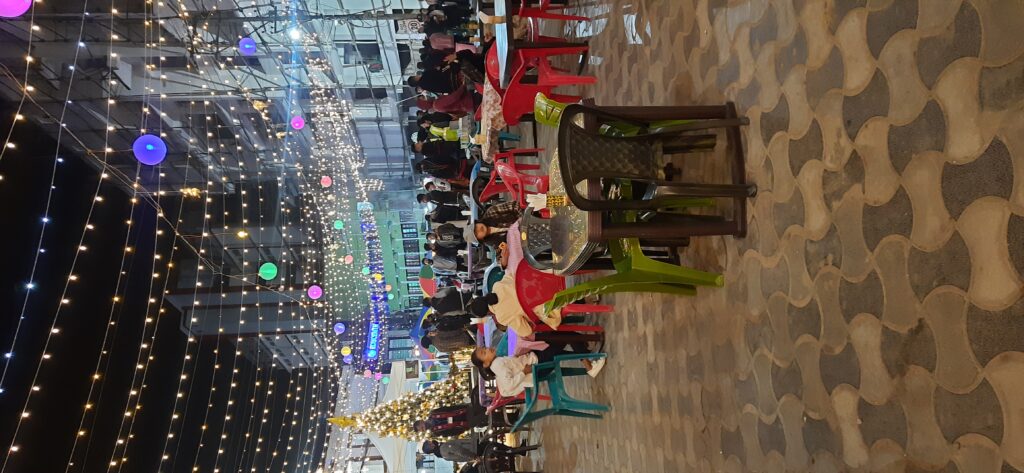
14.Various events are held simultaneously across venues scattered across different villages and resorts. Check out the schedule before making your itinerary.
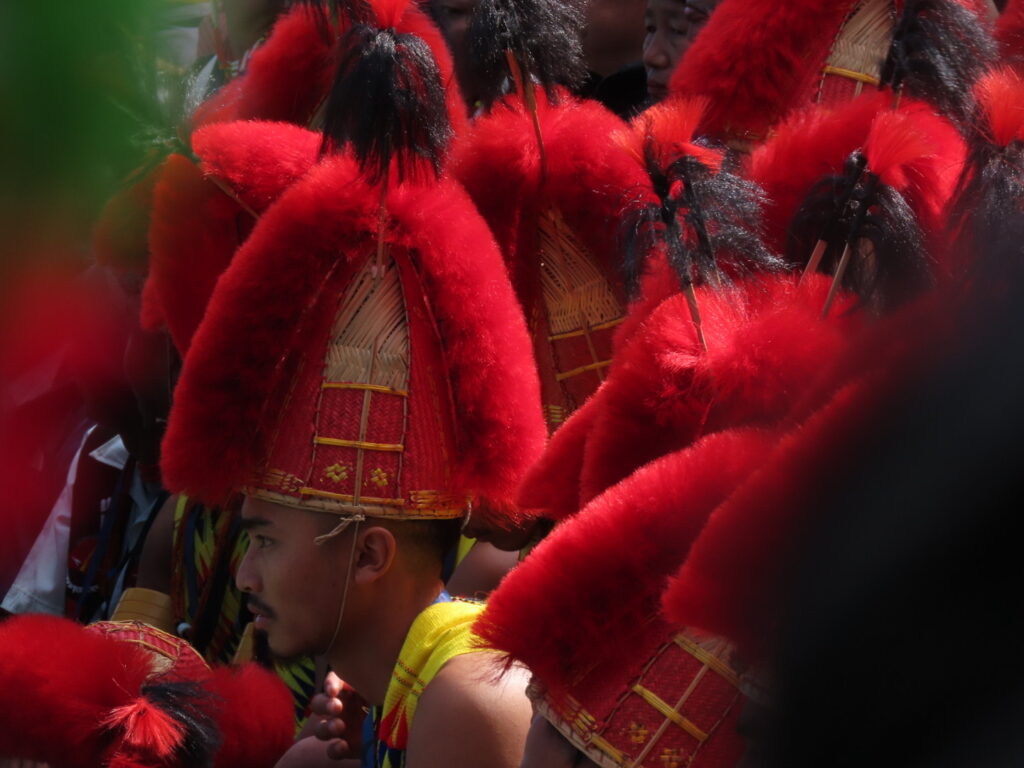
15.As a solo female traveller it was a pleasant revelation. The people are friendly but nobody pays attention to a single female. It was so nice to be ignored!
The elderly French photographer sitting beside me deplored the commercialisation as did some of the regular attendees (yet they still turn up). Be that as it may, the festival is a vibrant smorgasbord showcasing the pomp and pageantry of the Naga’s distinctive tribes.
Fact File-
- Kisama Heritage Village is about 12 km from Kohima.
- There are many tented camps and a few homestays around Kisama Village.
- The festival is from the 1st to the 10th of December every year.
- The entry fee per day is 50 rupees and there are extra charges for DSLRs.
- A meal generally costs Rs300 and a rice beer Rs100.
- Remember to be a conscious traveller and always carry your own water bottle!
